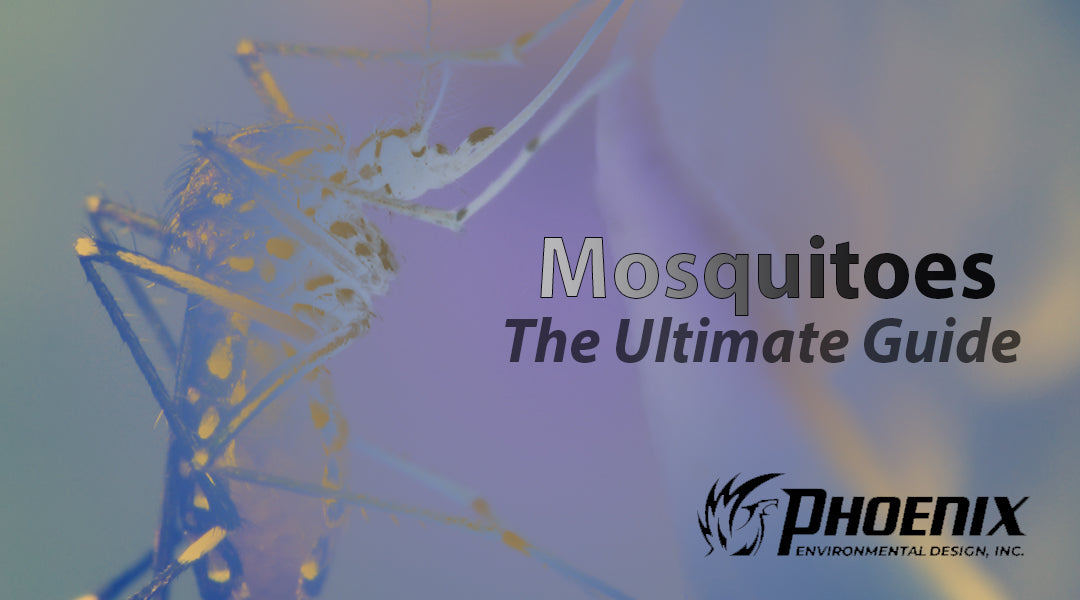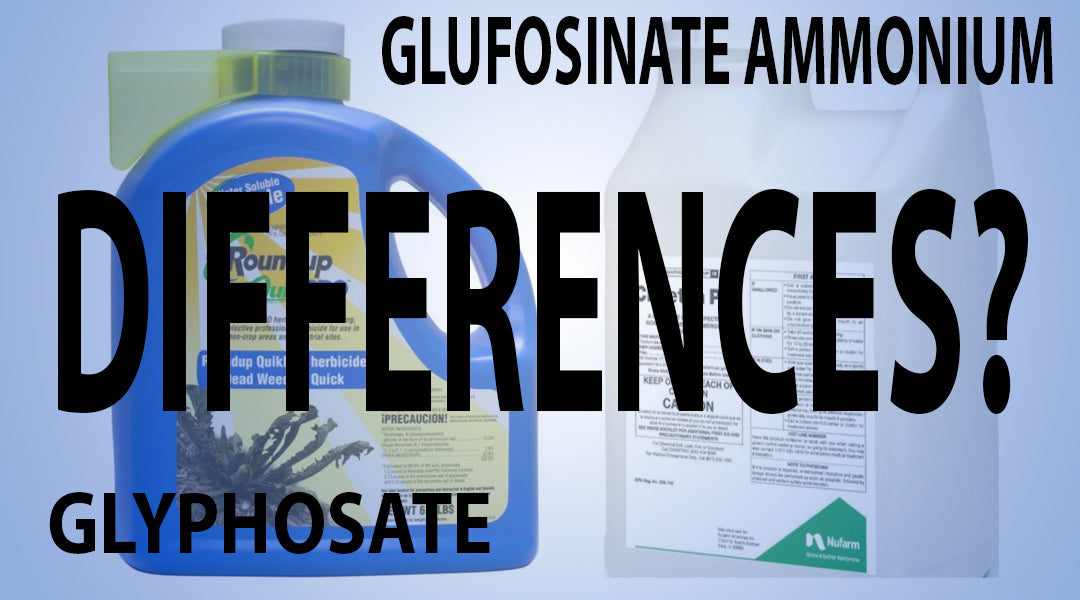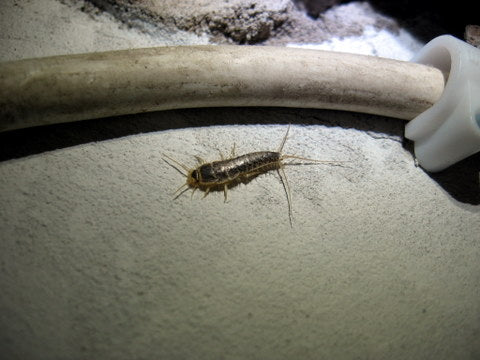Before humans walked the earth and planted gardens, weeds were everywhere and covered the continents. It's true that some weeds are nuisance turf pests and compete with the grass for water and nutrients. If you want to apply herbicides the right way, you need to know more about the weeds that you're treating.
Learn All About Weeds

Not all weeds are the same. Some die off right after flowering and live for one season. Others will continue to live as long as the weather and soil are optimal for growth. Let's take a look at two of the most common weed species you'll encounter:
- Annuals: These weeds reproduce by seeds and grow for one season. In fact, they begin to die not long after flowering.
- Perennials: These weeds reproduce by seed and rooting, so they'll stick around for several years if the conditions allow it.
Most of the common weeds that grow in maintained turf have broad leaves, giving them the name broadleaf weeds. But not all weeds are put in this category. Some weeds have narrow leaves and can be confused with turfgrass. Others have bristles and spikes and appear as brush.
If you want to get rid of the weeds in your lawn or in other maintained areas, such as commercial landscaping, you'll need to approach it the right way or else you'll make the problem worse.
Should You Pull Weeds?

It's never a good idea to start pulling weeds or to use this method as your only source of control. Pulling weeds doesn't solve the problem in most cases. If you're pulling a perennial weed, it can still reproduce from the taproot. If a little is left in the soil, it can regenerate and continue to grow.
Likewise, the entire plant can continue to live if you pull it out of the ground and simply toss it in the yard. Only if the entire root system is pulled up and disposed of properly will the weed stay gone. If it produced seeds and those seeds have been dispersed in your yard, then it doesn't matter if you've pulled it from the soil.
Are Pre-Emergent Herbicides Good?
While you can pull a weed to get rid of it, the best form of action is using a pre-emergent herbicide. It will prevent the seeds from germinating and spreading throughout the landscape. You can sprinkle some herbicide on the soil or mulch, water it and allow it to penetrate the soil. Depending on the brand, the herbicide will continue to prevent weeds for three months or more, which is perfect if you're trying to get rid of crabgrass and other nuisance weeds.
Will Weeds Harm the Turf?

When we think of weeds, we don't visualize pretty flowers. However, many weeds are beautiful and produce colorful flowers that could easily be mistaken for something grown in a garden. No matter if it's dandelions or common daisies, these weeds aren't good for your turfgrass or gardens.
They compete with your plants and grass for nutrients. Depending on the weed, the root system will choke out other beneficial plants. Some weed species also grow thick canopies and block water and sunlight from reaching the grass. If they're growing in your garden, your flowers and crops will suffer greatly.
Weeds like the sandbur or thistle are also bad for people. These weeds can cause skin irritation and prick the skin. You already know how bad poison ivy is, so removing it from the area is best if you want to avoid a very itchy situation.
Which Weed Control Products are Best?
There are two weed control types to consider for removing weeds from your lawn:
- Pre-emergent herbicides control weeds by preventing them from germinating. They don't kill established weeds in your lawn or garden.
- Postemergent herbicides kill the existing weeds in the area. Though they kill the weeds, they won't prevent new ones from emerging.
Herbicides are also categorized as selective and nonselective. It's important to understand the difference before using them as they could damage more than the weeds in your lawn:
- Selective herbicides kill the selected weeds, also called the target weeds on the label.
- Nonselective herbicides can kill most any plant in the target area, so use them with care.
You might also find some herbicides that contain a mixture of ingredients to fight weeds while adding nutrients to the soil for the beneficial plants. Therefore, you won't have to apply separate fertilizers or plant growth regulators when targeting and killing weeds in the same area.
Learning How to Apply Herbicides
Now that you know a little more about different weed types and the herbicides that kill them, it's a good idea to discuss the proper way and when to apply herbicides in different situations.
Applying herbicides is like applying fertilizers. If you apply too much to the target area, it could have damaging effects on the surrounding grass. You'll want to apply them correctly to kill the weeds without killing your grass or garden plants.
How to Apply Herbicides the Right Way

Perfect lawns and gardens don't pop up overnight. It takes careful planning and using the right herbicides to get the lawn and garden looking its best without the worry of weeds getting in the way. This means learning how to apply herbicides in the most effective way possible, such as the amount used and the best time of application.
Step 1: Protect Yourself

Before you can start applying weed killer and other products, you need the right protective gear and equipment for the job. Some gear to consider include:
- Long-sleeved shirts
- Pants or coveralls
- Goggles
- Masks
- Gloves
Once you're done applying the herbicides, take off the clothing and put them in a separate bin from your everyday clothes. Never wash clothes that you've used to apply chemical products with other laundry items.
Step 2: Get the Gear

You should also invest in weed killer equipment to apply the herbicides to the target area. Some common equipment that's useful for various weed products include:
- Dusters
- Broadcast spreaders
- Granular applicators
- Hand sprayers
You can always wear protective gloves and disperse granular herbicides by hand, but you'll get better coverage with a spreader, whether it's with a hand spreader or a push-along broadcast spreader.
Some herbicides come ready to mix in a tank and to apply with a sprayer, but others come in aerosol form. For spot treatments, either one will work. For wide areas such as a lawn, a hand sprayer will work best to cover large areas at once.
Step 3: Read the Labels

Even if you don't normally read labels or instructions, never skip this step. It could mean the difference between killing weeds and ruining your entire lawn and garden. The label will inform you of everything you need to know, such as:
- The target weeds
- The active ingredients
- The toxicity level
- The herbicide's purpose
- The application areas
You'll also learn about how to use it correctly, how to protect yourself and the best way to dispose of the product. Herbicides can drift and run off and get into the water supply or the environment. Reading the label will ensure that you understand what to do in order to prevent an accident and what to do if something goes wrong.
Step 4: Know When to Apply

There are times to apply herbicides that provide more effective results and other times when it seems like nothing you do works. Pre-emergent herbicides often come in granular form, so you can apply them in most any condition. Postemergent herbicides work best when the soil has warmed up and the weeds are actively growing. Follow these best practices for the best results:
- Apply pre-emergent herbicides before the temperatures reach 60 degrees. It will help to stop germination and prevent the weeds from emerging once the weather warms up.
- Apply postemergent herbicides when the temperatures range between 60 and 90 degrees. It will kill the weeds that have emerged from the soil.
Most postemergent herbicides come in liquid form, but some granular versions are now making their way into the consumer market. You can apply these versions by hand or with a spreader much like you would a pre-emergent granular herbicide.
Try not to spray on windy days. If you can apply the product in the morning or evening, you may see better results when treating the weeds.
Step 5: Decide on the Application

Spray, granular or brush applications – which do you choose? It all depends on the weed and the season.
- Spray applications are almost always recommended. It helps you to cover the weed with the active ingredients.
- Granular applications are also good and slowly seep into the ground over time, preventing future growth.
- Brush applications are helpful when other methods fail. Use a paint brush to paint some herbicide solution onto the plant, making sure to saturate it from top to bottom.
Some professional exterminators will also use a method in which they cut the weeds and then saturate it with the herbicide. This method ensures that the active ingredients move through the plant and eventually reach the root system. For greater coverage when applying the product, add a surfactant to the mix for even better results.
Step 6: Mix the Herbicide Correctly
This step was slightly covered in step 3, but it's important to remember that not all herbicides are ready to spray out of the bottle. You may have to mix the amount needed with water in a tank. Again, refer to the label for the exact instructions on mixing the product.
You should only mix the amount that you need for the job. You'll also need to calibrate the equipment if you're using a sprayer. Doing a few test runs will ensure that everything works before you start spraying the lawn or garden. Also, never store your mixed herbicides. You should use all of the mixed solution when possible. Always dispose of the herbicide according to the instructions on the label.
Step 7: Apply the Herbicide

You'll always want to read the label and follow the instructions for the proper way to apply the herbicide. Although we can tell you the basics of applying sprays and granules, the specific herbicide that you buy may have a certain technique for application.
Keeping it simple, follow these basic procedures when applying granular and liquid herbicides:
- Apply the product with consistency.
- Try not to overlap the product as you go.
- Spray in a way to keep from walking in the application area.
- Use all of the mixed liquid herbicide in the tank.
When applying granules, walk as you would if you were cutting the grass. Walk along and spread the granules, and then turn and walk the other way. Continue back and forth until you've applied the granules throughout the target area.
When applying a liquid solution, cover the entire plant with the product. Apply a fine mist over the plant, trying not to douse a single weed. You want uniform coverage, so spray back and forth as you would if you were painting a surface with an aerosol paint can.
Step 8: Store Everything Properly

Always store the herbicides in their original containers, never in a plastic jug or a different storage container. They should be locked away in a cabinet away from other people, especially children and pets. Keep them away from high temperatures and open flames, and dispose of any leftovers according to the disposal instructions on the label.
If you have empty herbicide containers, rinse them completely and fill them with newspapers or other material just in case any product is still inside. Follow the instructions for disposal since it's not always best to throw the containers in the trash with regular garbage.
Step 9: Clean Up

Now that you've finished applying the product, clean up the equipment. You'll want to rinse the spray equipment and flush out the hoses. Don't forget to clean the nozzles, too. You don't want any leftover herbicide on or in the equipment in case you use a different product later. If they mix, it could damage the plants in the target area.
You should also wash your hands, face and body after spraying herbicides. Make sure to wash the clothes separately from your other laundry.
Step 10: Know Safety Procedures

In case any product gets on your skin or in your eyes, you should rinse the effected area immediately with water. If you've inhaled the product, move to an area with fresh air. In extreme cases, take the container with you if you need to visit the doctor or to call poison control.
Now You Know How to Apply Herbicides
When you're thinking about killing the weeds in your lawn or garden, think of Pedchem.com for your herbicides and other pest control products. Whether you're treating established weeds in your lawn or trying to prevent new ones from emerging, we have numerous products to help keep your lawn and garden free of weeds through every season.







Leave a comment (all fields required)